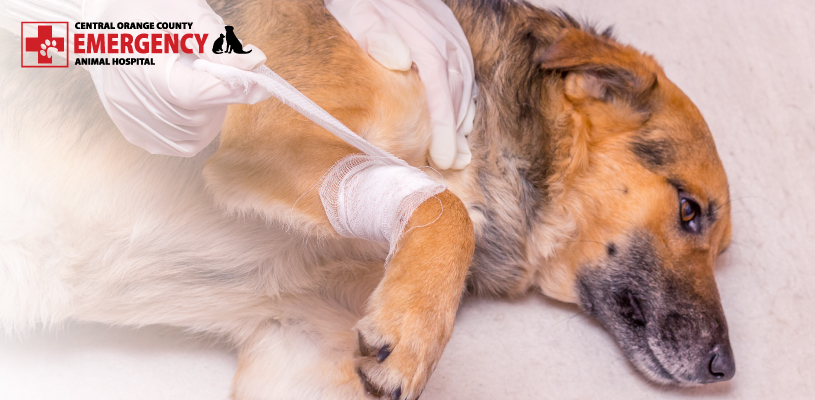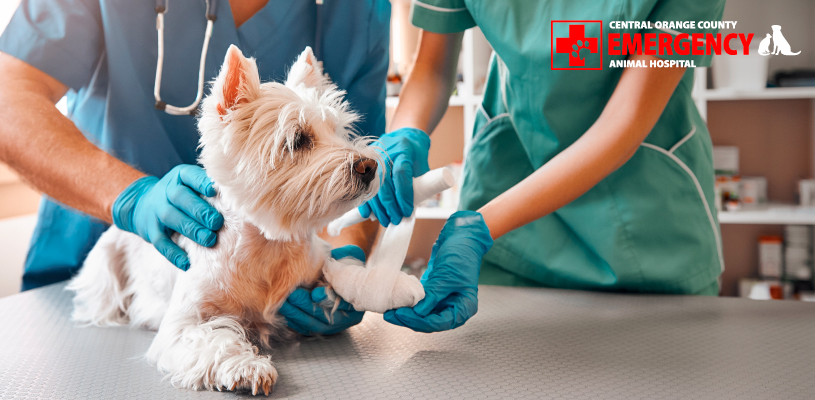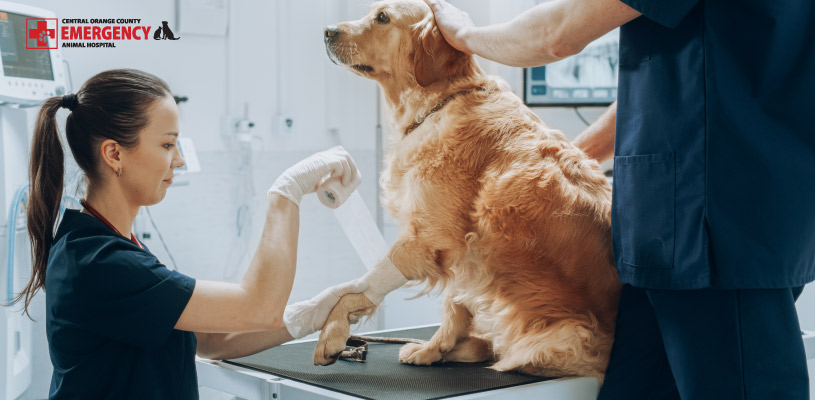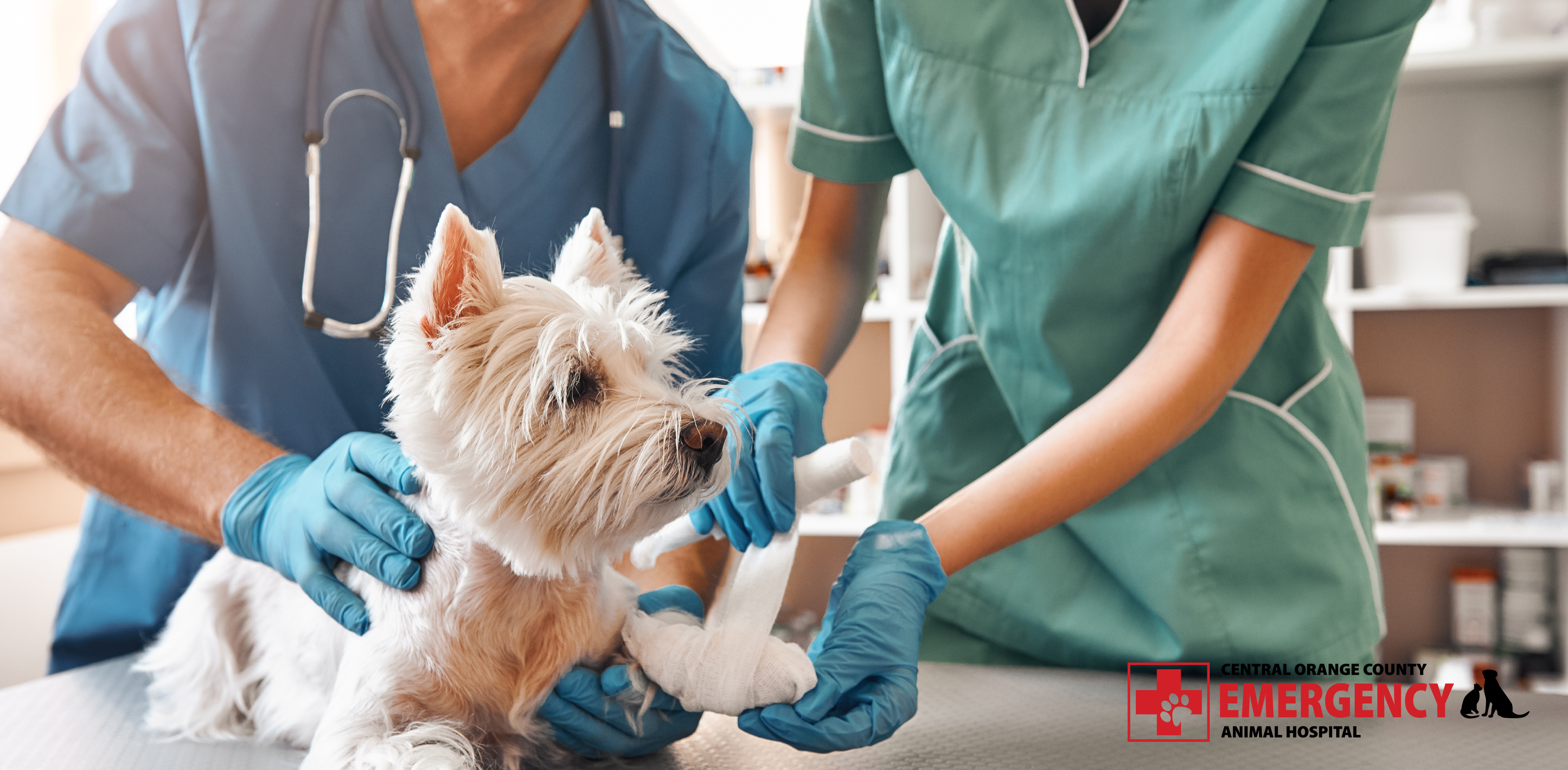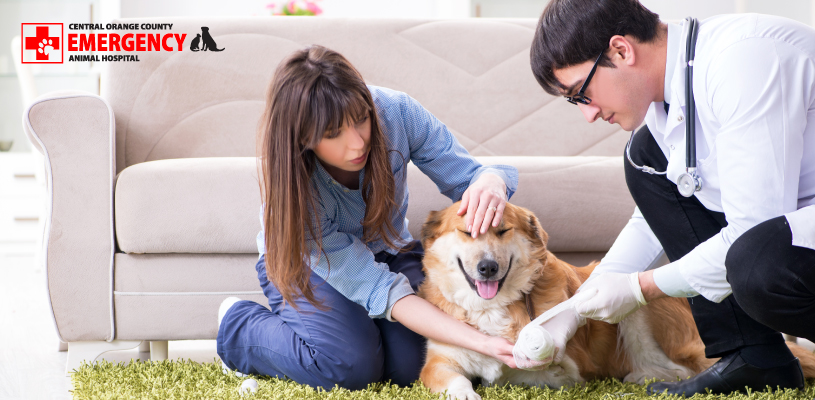You might need to help your dog before taking them to an emergency vet if they have open wounds after a fight or any other accident. We hope this information will prove useful during an emergency and after, as home care is vital to help your dog fully recover and heal. Always keep in mind general steps to manage a veterinary emergency like the ones we included in previous articles.
Your dog might cut itself with a sharp object lying around in the shed, or they might have an open wound from a fight with another animal. At any rate, you must help clean the wound and take your dog to a veterinary emergency care center as soon as you can.
Start Managing the Emergency
Step one: remain calm. Your dog might be quite anxious from the pain, which is why you need to act level-headed. Be mindful of your actions and careful not to hurt your dog accidentally. Keep in mind your dog’s size and the open wound’s location, as you are better off leaving all the work to a professional if the affected area is too sensitive.
If the wound is not deep and you can quickly stop any initial bleeding, you can do the following:
- Get down on the ground with your dog or bring them up over a table if it’s a smaller dog. Ask for help. If anyone else is available, have the other person hold down your dog with a blanket or towel. It would help if you also considered muzzling your dog with the dedicated muzzle from their first-aid kit or improvising one with nylon socks or towels.
- Clip the hair around the area using your dedicated clippers from the first-aid kit. You could use a water-based lubricant over the surrounding area to help remove shaved wair and debris. We recommend you keep to electric clippers to avoid potential damage to your dog’s skin with scissors or razors.
- Wash the area with warm water to remove any debris and potential contaminants.
- Apply a non-stinging antiseptic solution. It would be best if you considered having a 2% chlorhexidine solution in your first-aid kit. This solution is affordable and very effective. You could also consider options like povidone-iodine.
- Use an antibacterial ointment containing bacitracin, neomycin, and polymyxin B. These triple antibiotic ointments are readily available in most pharmacies. Still, you should avoid any products containing corticosteroids when looking for options to treat your dog.
- Contact your veterinarian to receive additional help. You might obtain indications to continue cleaning the wound with an antiseptic solution, as we mentioned before, anywhere between two or three times a day. Wait until the area is dry and finish with the antibiotic ointment. And keep your dog from licking the wound.
- Keep your pet’s emergency vet in the loop. Go to the care center if you notice the wound worsening.
Emergency Vet Help Managing the Emergency
If the wound were deep, our primary concern would be to stop any hemorrhages and quickly disinfect the area. We might need to put your pet under heavy sedation or anesthesia to prevent any additional sensations of pain and risks to our staff.
We will also be attentive to manage any abscesses formed and place a drain to prevent the wound from closing too quickly. Drainage helps prevent subsequent infections. If there is no need to keep the wound open, we will suture the wound closed to promote healing.
Remember that your dog might require protective bandages over the wound to help protect the affected area until it finishes healing. Finally, your dog will receive several oral or injectable antibiotics to manage potential infections during their healing process.
Emergency Vet Tips for Homecare
It would be best if you kept in mind all the indications your pet’s veterinarian gave you. Clean the wound and the surrounding area as frequently as indicated by professionals to remove any debris and keep the edges clean.
The most important thing is to help the development of healthy tissues, and you would also do well to replace bandages as instructed by the emergency vet. Administer the medications as prescribed and immediately contact your pet’s veterinarian if you need a prescription refill.
Let’s review some specifics.
Managing Drainage at Home
If there is any drainage, keep the area clean and follow recommendations to avoid closing the wound too quickly. When you clean the wound, try gently massaging the area to slightly open the wound and promote drainage.
Take note of the discharge or bleeding. If you note more bleeding or a thick or colored discharge (it could look greenish or yellowish) for several consecutive days, contact your pet’s veterinarian for additional instructions.
Preventing Your Dog From Licking Their Wounds
No, a dog licking its wound is not helping it recover any faster. Some people believe that a dog’s alive is somehow antiseptic. That is no fact and remains very far from the truth. Because a dog might instinctively lick their wounds, we recommend you use an Elizabethan collar to prevent such behavior. If your dog’s wounds are not bandaged, consider using this device to help prevent anything that may delay healing.
Getting in Contact With an Emergency Vet
Many factors are affecting your dog’s healing from an open wound. Keeping them healthy before an emergency will go a long way in ensuring they can properly heal after an accident, but receiving professional help to treat the emergency and manage the aftereffects should always be a priority for responsible pet owners.
Get in contact with a professional team like that of COCEAH’s emergency vets and let us know if you need any help during a veterinary emergency. You can give us a call at 949-261-7979 to ask for specific help or to let us know you are coming with a dog needing emergency care. Learn more about our hours of operation during the week here, but you should know that you will find us open 24 hours on Saturdays and Sundays if you have a weekend emergency.
